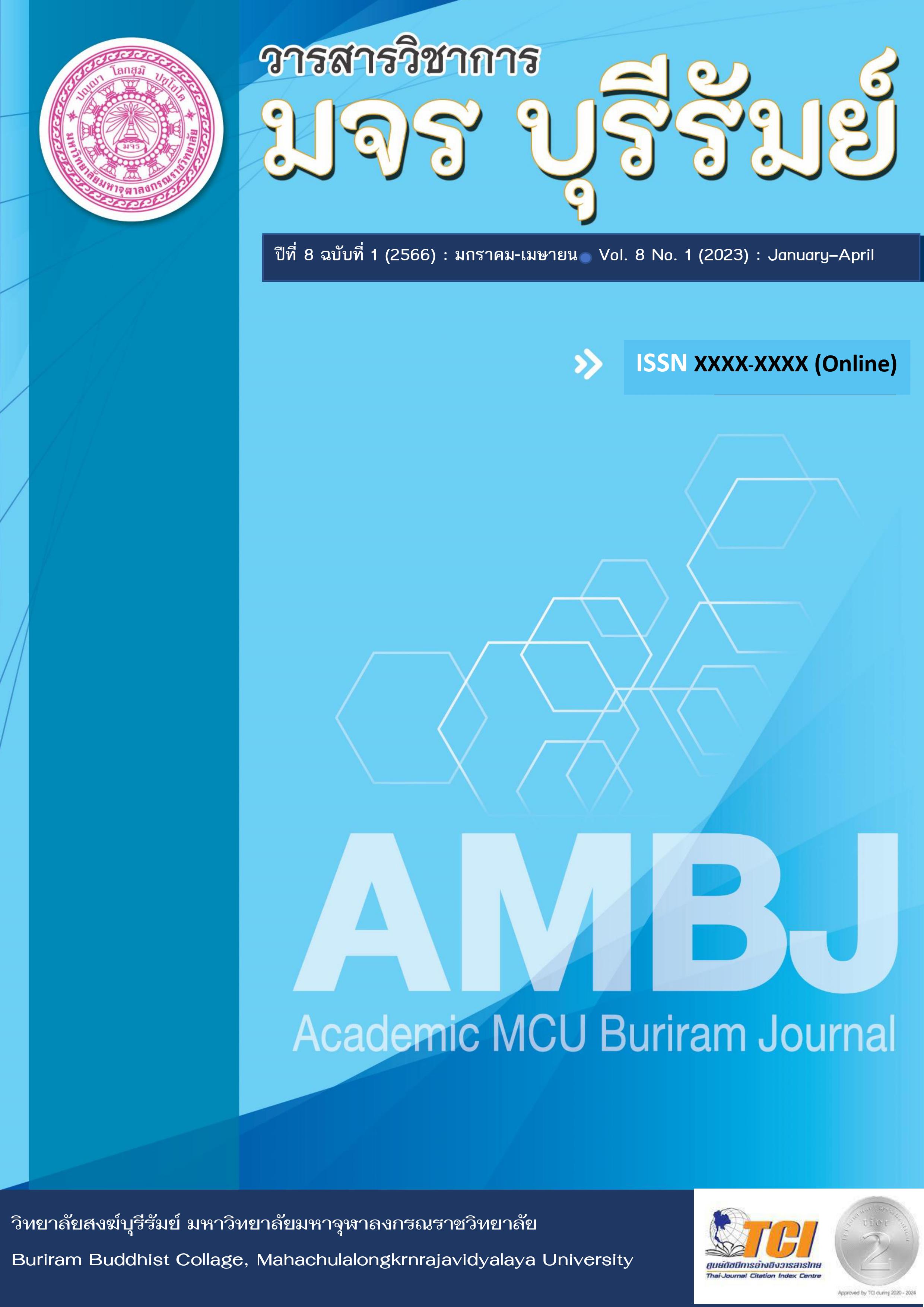The Study of using 5 Steps Learning Process Accompany with Gamifications Strategy to Develop grade 8 Students’ Analytical Thinking Skill in Basic Science Subject
Keywords:
5 Steps Learning Process, Gamification, Analysis ThinkingAbstract
The purposes of this research were: 1) To compare analytical thinking the solution before and after learning management with the 5 STEPs learning process by using gamification strategy 2) To study students' satisfaction with learning management with a 5 STEPs learning process by using gamification strategy. The participants of this research were secondary school grade 8 student classrooms in the first semester of the academic year 2022 at Thammasatklengluangwittayakhom school by using Cluster random sampling. The instruments of the research were 1) 5 STEPs learning process by using gamification strategy, 2) analytical thinking test 3) satisfaction questionnaire. The data was analyzed by percentage, Mean, Standard Deviation, Paired sample t-test, and One sample t-test.
The research results found that:
1. The posttest scores of analytical thinking with the 5 STEPs learning process by using gamification strategy on Geological statistically significantly higher than the pretest scores of those at the .05 level. (M= 15.04, S.D. =2.82)
2. Students were satisfied with the 5 STEPs learning process by using gamification strategy. It was found that the overall level was at the highest level. (M= 4.50, S.D. = 0.54).
References
ธัญญารัตน์ สุขเกษม. (2562). ผลการจัดการเรียนรู้แบบกระบวนการเรียนรู้ 5 ขั้นตอน (5 STEPs) ร่วมกับการใช้คำถามเชิงวิเคราะห์ เรื่องวิวัฒนาการที่มีต่อการคิดวิเคราะห์ทางวิทยาศาสตร์และผลสัมฤทธิ์ทางการเรียนของนักเรียนชั้นมัธยมศึกษาปีที่ 4. ศึกษาศาสตร์สาร มหาวิทยาลัยเชียงใหม่, 3(2), 24-36.
เบญจภัค จงหมื่นไวย์ และคณะ. (2561). เกมมิฟิเคชั่นเพื่อการเรียนรู้. วารสารโครงงานคอมพิวเตอร์และเทคโนโลยีสารสนเทศ, 4(2), 34.
พิมพันธ์ เดชะคุปต์ และพเยาว์ ยินดีสุข .(2558). การจัดการเรียนรู้ในศตวรรษที่ 21. กรุงเทพฯ: โรงพิมพ์แห่งจุฬาลงกรณ์มหาวิทยาลัย. สำนักวิชาการและมาตรฐานการศึกษา
สำนักงานคณะกรรมการพัฒนาการเศรษฐกิจและสังคมแห่งชาติ. (2559). แผนพัฒนาเศรษฐกิจและสังคมแห่งชาติ ฉบับที่สิบสอง พ.ศ. 2560 – 2564. สำนักนายกรัฐมนตรี.
สุทธิกร กรมทอง. (2559). การจัดกิจกรรมการเรียนรู้เพื่อเสริมสร้างแรงจูงใจใฝ่สัมฤทธิ์ทางการเรียน ของนักเรียน โดยใช้รูปแบบห้องเรียนกลับด้านร่วมกับเทคนิคเกมมิฟิเคชัน สำหรับนักเรียนห้องเรียนพิเศษวิทยาศาสตร์ ชั้นมัธยมศึกษาปีที่ 4 โรงเรียนวาปีปทุม. วิทยานิพนธ์ปริญญาครุศาสตรมหาบัณฑิต สาขาวิชาคอมพิวเตอร์ศึกษา. คณะครุศาสตร์: มหาวิทยาลัยราชภัฏมหาสารคาม.
Bloom, B.S. (1961). Taxonomy of Education Objectives. New York: David Mckay.
Glover, I. (2013). Play as you learn: gamification as a technique for motivating learners.
Kapp Karl M. (2012). The gamification of learning and instruction: game-based methods and strategies for trainingand education. 1st ed. San Francisco: Pfeiffer.
Kotler, Phillip and Armstrong. (2002). Principle of Marketing. USA: Prentice-Hall.
Simoes, J., Redondo, R. D., & Vilas, A. F. (2013). A social gamification framework for a K-6 learning platform. Computers in Human Behavior, 29(2), 345-353.
Downloads
Published
How to Cite
Issue
Section
License
Copyright (c) 2023 Academic MCU Buriram Journal

This work is licensed under a Creative Commons Attribution-NonCommercial-NoDerivatives 4.0 International License.
ทัศนะและความคิดเห็นที่ปรากฏในบทความวารสารฉบับนี้ถือเป็นความรับผิดชอบของผู้เขียนบทความนั้น ไม่ถือเป็นทัศนะและความรับผิดชอบของบรรณาธิการ





